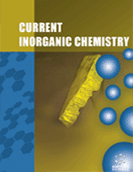Abstract
Background: Polyoxometalates (POMs) represent a large class of polynuclear oxo-bridged early transition metal compounds with extraordinary rich variations of building modes and versatile chemical and physical properties. However, the antimonate-based Anderson-Evans POMs have received scarce attention. Herein we report easy transformation of [SbW9O33]9- into [SbW6O24]7- by oxidation of Sb3+ to Sb5+ with bromine water.
Objectives: The main objective of this study was to find an easy way to [SbW6O24]7- Anderson-Evans type anion.
Methods: Na9[SbW9O33]·19.5H2O was dissolved in distilled water in a beaker, then bromine was added to the solution for oxidation. After one hour heating final solution was allowed to evaporate in the hood. Two days later large colorless crystals of Na7[SbW6O24]·16H2O together with a small amount of Na7[SbW6O24]·24H2O were collected and characterized by XRD, XRPD and IR.
Results: The oxidation of SbIII in α-B-[SbIIIW9O33]9- by bromine water leads to transformation of this trilacunary Tourné anion into [SbVW6O24]7- Anderson-Evans type anion with elimination of three tungstate units. Slow evaporation of the solution gives large colorless crystals of Na7[SbW6O24]·16H2O (1a). XRPD analysis also revealed the presence of a small amount (ca. 5 %) of additional phase Na7[SbW6O24]·24H2O (1b). In both structures [SbW6O24]7- anion is not protonated and the Sb-O bond distances are nearly equal, rendering the coordination sphere around SbV nearly perfectly octahedral. In 1a d(Sb1-O1) = 1.989(4) A, d(Sb1-O2) = 1.983(4) A, and in 1b d(Sb1-O1) = 1.978(4) A, d(Sb1-O9) = 1.984(4) A, and d(Sb1-O10) = 1.976(4) A. Our preparation of [SbVW6O24]7-, taking into account that starting [SbW9O33]9- can be generated in one-pot reaction from sodium tungstate and a Sb(III) source, offer advantages of using more readily available Sb(III) without the necessity of making [Sb(OH)6]-, in a simple procedure and acceptable yield.
Conclusion: Oxidation of [SbW9O33]9-·with bromine water gives Anderson-Evans type polyoxometalate [SbW6O24]7- which was isolated and characterized as a mixture of Na7[SbW6O24]·16H2O (main phase) and Na7[SbW6O24]·24H2O (minor product). The main structural difference between these is in the arrangement of sodium cations. In the main phase each Anderson-Evans anion surrounded with four type cations forming 3d network, but in the minor phase POM anions can be defined as guest molecules in a sodium-water 3d framework.
Keywords: Antimony, tungstate, anderson-evans polyoxometalate, crystal structure, oxidation, metal compounds.
Graphical Abstract
 22
22 2
2 2
2 1
1

